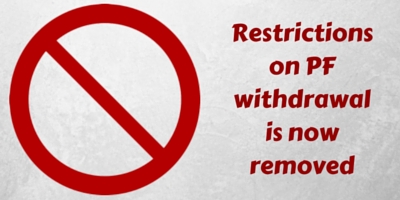The PF withdrawal norms, which had conditions and restrictions regarding the amount that could be withdrawn, has been rolled back by the government.
As per the previous notifications, it was announced that the complete amount could not be withdrawn until the retirement age. This caused a lot of potential problems for those employees who were quitting formal workforce to start their own businesses or people who were moving abroad.
But this rule was not applicable to female contributing members who were resigning on account of marriage, pregnancy or childbirth.
To prevent this kind of problems, the government has decided to withdraw this policy. This is applicable to all organizations that come under the EPF scheme, including companies that come under the state and central government if they come under the scheme.
The rule for the female contributors will continue the same, i.e, full withdrawal is applicable in cases of marriage, pregnancy or childbirth.
It is expected that this PF withdrawal norms will come into effect from 1st of August, 2016.
It has been announced that this decision will soon be approved by the EPFO’s trustees.
According to the latest PF withdrawal norms, employees can withdraw their own share of PF along with the interest on them up to the date of the payment.
TDS will be applicable on the withdrawn amount if the withdrawal is made within 5 years. However, TDS is not applicable if the amount is less than Rs. 50,000. The employer’s PF contribution will be taxed under the salary income whereas the employee PF contribution will be taxed under income from other sources.
The employer contribution will be taxed as a part of your salary income while the employee contribution will be taxed as income from other source.
Other related topics: Filing of EPF and ESI together, Inoperative PF accounts to earn interest.



EPFO Member can also submit Form 15G / 15H, in case if they don’t fall under Income Tax Slab.
With their Claim forms 10 C and 19, Employee has to self declare his Income through 15G/15H.